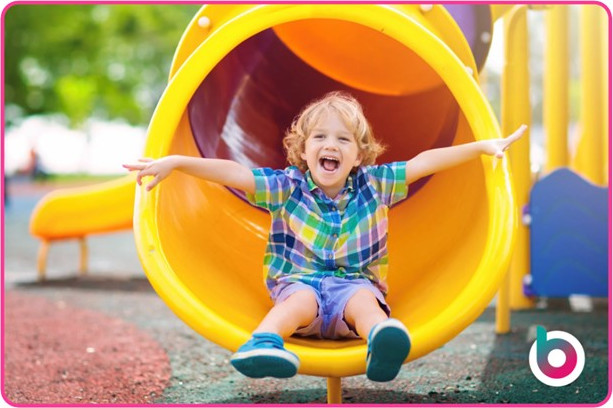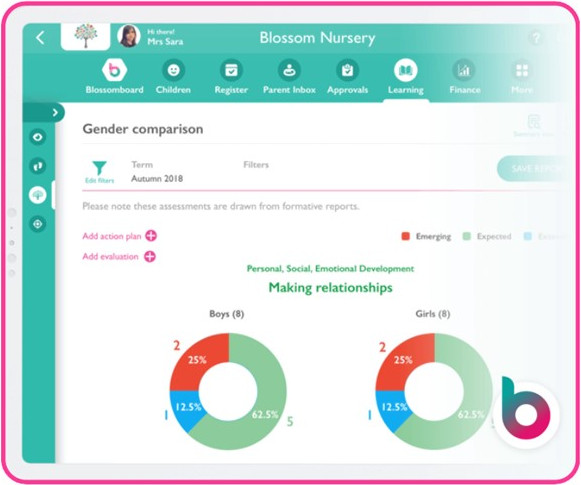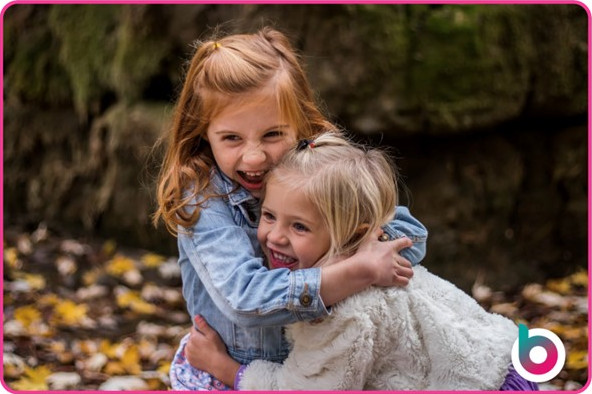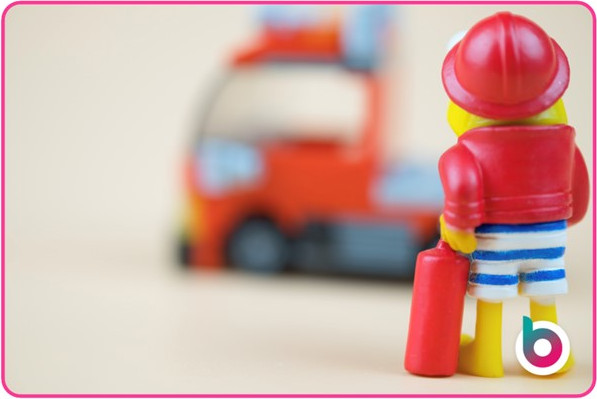We’ve combined our expert EYFS knowledge, recent Ofsted inspection experience and information from the latest Ofsted inspection information (February 2025) to give you questions and answer examples in the seven main areas of safeguarding.
In this article, we share 32(!) of the most important safeguarding questions Ofsted might ask you and your nursery team.
Ofsted and nursery safeguarding
Safeguarding used to be threaded through each of the four inspection areas (quality of education, behaviour and attitudes, personal development and leadership and management). Ofsted’s latest changes (released February 2025) move safeguarding into its own category.
Schools and eventually nurseries will be judged if they are meeting the legal and expected standard of safeguarding and will receive a ‘met’ or ‘not met’ grading.
The term school and nursery leaders should be aware of when considering how Ofsted inspects safeguarding in the early years is:
‘Providers are either doing everything they can to keep children and learners safe, or they are not.’
A nursery provision must have child safety and wellbeing at the forefront of strategic and operational decisions. Ofsted evaluates how well an EYFS setting is providing the provision set out in the Statutory EYFS Framework during inspections.
The latest proposed Early Years Inspection Toolkit sets out 25 evaluation areas that inspectors will examine during their visit, this also includes a further 5 safeguarding specific areas.
Ofsted inspects EYFS safeguarding by collecting evidence and monitoring if your nursery’s written policies can be seen in practice.
We have split our Ofsted questions and answers into seven main sections, to help you and your nursery team to unpick the areas together. The questions and suggested answer points are designed as a jumping-off point only, to ensure you and your practitioners are confident to shout about your EYFS safeguarding provision in your next inspection.
EYFS Ofsted safeguarding questions for child protection
1. What are your Safeguarding processes?
What safeguarding processes do you follow if you have a safety concern about a child in your setting?
- Your staff should be vigilant in noticing signs of safety concerns in children. Having the mindset of ‘it could happen here’ is essential
- Your training should set your staff up to recognise signs of abuse and neglect
- As detailed in your safeguarding policy, your team will recognise, respond, record and report the incident to the setting’s Designated Safeguarding Lead (DSL)
- Once reported to the DSL, a decision will be made for immediate action or further monitoring- external agencies may be called on for advice or support
- Challenge your team to think about the type of safety concern and how they can act to ensure child safety and wellbeing immediately
Bonus question: What is your setting’s safeguarding procedure if DSL is not immediately available (like during an off-site trip)?
We have found this question has been asked frequently in recent EYFS Ofsted inspections (2024).
2. An allegation has been made against a member of your nursery team, what is your investigation procedure?
- Investigations will be timely, thorough, impartial and done so in line with your setting’s safeguarding policy
- Ofsted will be notified about incidents that meet the threshold
- As with any disclosure, the DSL will be informed, and the proper reporting procedure will be followed
- The Local Authority Designated Officer (LADO) will be notified and will be able to provide further advice and guidance (even if the DSL is involved in the allegation)
- Immediate actions may need to be taken during the investigative process for child and staff safety
Remember – you must remain impartial throughout the investigation and ensure your team member is suitably supported (either by you or another named team member).
3. What is your setting’s mobile phone policy, and how is it enforced?
- Think about this question as applicable to practitioners, parents, and visitors. How do you ensure that phones are not used improperly during the nursery day?
- You may have restricted areas where phones are not permitted (like nursery rooms)
- It is worthwhile considering how your emergency procedures use mobile phones for contact (whilst off-site, etc.) and how this phone use can be monitored
- You may also want to include the use of smartwatches during the nursery day. How can you ensure inappropriate messages or images can never be seen on the watch by a child or parent, for example?

4. What steps do you take to ensure practitioners can confidently identify, understand and respond to possible signs of abuse or neglect?
- Evidence of regular training programmes and bespoke CPD journeys tailored to your setting’s needs
- Training in line with Keeping Children Safe in Education (KCSIE) and Working Together to Safeguard Children
- The appointment and access to a suitably trained DSL
- Clear policies and procedures run through regularly during staff meetings in the form of scenarios
- Reflective practice is encouraged throughout your setting, linking to your safeguarding culture
5. A parent is suspected to be under the influence of alcohol on nursery drop-off and/or pick-up, what do you do?
- As this is a perceived risk, your setting should have a risk assessment and linking procedure to follow
- The situation should be assessed, and child safety should be prioritised (meaning a refusal to hand the child to the parent if deemed necessary)
- Practitioners should ensure the child remains with them whilst they discuss the situation with a senior member of the nursery team
- The situation should be managed sensitively (external services should be contacted if needed)
- Records should be made of all interactions in detail
6. What is your understanding of Prevent duty, and how do you increase nursery practitioner confidence?
- Prevent duty aims to reduce the risk of radicalisation into terrorism. It is a duty for all public-facing organisations, like nurseries
- As with any safeguarding concern, practitioners should be confident in identifying, understanding and responding to possible signs of radical views and behaviours
- Tied into your setting’s EYFS curriculum, your children should be exposed to a variety of different viewpoints, traditions and faiths as part of your fundamental British values offer
Safeguarding questions about suitable people
7. What systems are in place to ensure all people in contact with the children are suitable?
- Consider your safer recruitment training and processes, including reference checks (including if they have worked outside of the UK)
- DBS checks are essential for all people working with children
- Staff training and induction processes for new staff must prioritise expectations, systems and procedures surrounding safeguarding
8. How do you use self-declaration forms in your nursery setting?
- Once a candidate is short-listed, self-declaration forms are given for previous convictions, cautions or ongoing investigations that may impact their suitability to work with children
- If an existing employee receives a criminal conviction or arrest during their time with your setting, you must have the disclosure expectation detailed in your safeguarding policy
9. Information is brought to light about an existing employee’s behaviour outside of work that involves illegal activity, what process do you follow?
- Consult your policy and seek guidance from external agencies (LADO if necessary), if a part of a nursery chain, you may want to discuss the issue with other safeguarding professionals in the group- maintaining confidentiality where needed
- Child safety and wellbeing are the priority, and transparency surrounding your investigation process is a must
- Ensure your practitioner’s wellbeing and mental health are considered, and offer the appropriate support and guidance during any investigations
10. Scenario: A staff member is taking new medication, this medication has been making them drowsy. You have noticed this during conversations with them and other team members have also told you, what do you do?
- Direct the practitioner to contact their prescribing doctor immediately to discuss their suitability for work
- If a doctor has confirmed their suitability for work whilst taking the medication, follow the necessary procedures to ensure child safety
- Keep conversations supportive and transparent with the practitioner without ever risking child safety and wellbeing. A practitioner must be fit and healthy to be responsible for children
Ofsted questions and answers about EYFS staffing
11. Can you talk me through your EYFS staff induction process?
- Pre-induction preparations will include suitability checks, policy sharing and staff code of conduct understanding
- Your new staff member will have access to all software, information and contact details of key personnel from the beginning of their employment with you
- A tour of the environment should include health and safety notices (like emergency meeting points, fire exits and evacuation procedures)
- Details of the mandatory training for new employees should be recorded using your online systems
- Your new team member will likely be given a mentor or buddy to ensure they can gain insights into operational routines
12. What are your nursery emergency evacuation procedures?
- Consider all incidents that may need an emergency procedure (fire, gas leak, flood, injury or threat of violence)
- Provide regular staff training and drills (where appropriate)
- Ensure communication systems are reliable (including a calendar of equipment testing)
- Accountability checks (ability to take the register on a mobile device)
- Review policies, evacuation processes and exit routes regularly

13. How do staff recognise a developmental concern?
- Regular and accurate EYFS tracking systems
- Effective communication between nursery practitioners, parents and other external professionals
14. What training and progression is available for staff?
- Operate a culture of proactivity- if a practitioner feels there is an area lacking knowledge (in safeguarding, SEND, curriculum or best practices), they are encouraged to share this with the leadership team
- Each staff member receives the mandatory safeguarding training each year, as a minimum. This is demonstrated through bespoke CPD plans for your nursery
15. How do you support practitioners in managing sensitive discussions with families?
- Recognition of the importance of a secure working relationship and how this is fostered
- Scenario-based training for sensitive topics (safeguarding, SEND identification, undesirable behaviours)
- Mentors and buddy system within practitioners for them to shadow and observe sensitive interactions (where appropriate)
- A reminder of the confidentiality expectations for staff
- Recognition of trauma-informed approaches for children and parents
Early years Ofsted questions about staff ratios
16. How do you ensure staffing arrangements meet high safety requirements?
- Staff ratios are adhered to using software to plan staff rotas safely
- Occupancy is monitored using software to allow flexible staffing for coverage in the event of staff absence
- Robust background checks into staff qualifications means the correct ratios can be adhered to in line with the level of responsibility a practitioner can undertake
17. In light of the recent EYFS guidance, how do you ensure children are safely monitored when eating?
- Staff are suitably trained to understand choking hazards and safe food preparation
- All staff engage in close and active supervision when children are eating
- The required number of practitioners are suitably trained in paediatric first aid
- Calm mealtime environments are non-negotiable in each nursery room
- Risk assessments reduce the possible risks and are frequently reviewed

EYFS Ofsted questions for health and safety
18. How is oral health promoted in your nursery?
- An emphasis on good oral hygiene and health is underpinned by activities, stories and EYFS games and songs
- Healthy eating and drinking choices are promoted
- Parents have useful advice shared regularly on healthy snack and drink alternatives
- Staff are trained in oral health awareness and offer parents workshops on the dangers of poor oral hygiene in infancy
19. How are infectious (or potentially infectious) illnesses or diseases managed in your setting?
- Your setting will have clear policies and procedures that are regularly shared with parents surrounding common infectious diseases (like Hand, Foot and Mouth Disease)
- The NHS guidelines are taken into consideration when deciding exclusion and isolation periods for illnesses
- Good hygiene practices are adopted across the nursery
- Parents are made aware at the earliest opportunity to help try to control the spread of illnesses (like Chicken Pox)
20. How is children’s medication administered and stored safely?
- Parental consent is recorded in an easy-to-access format (using software) to inform all staff of the dosage and time administered
- Staff are suitably trained in administering the medication (especially if a specific condition like insulin injections)
- All medication is stored safely, staff are aware of where the medication is stored and how to access it in an emergency
- The nursery has emergency life-saving medications like asthma inhalers available (within date), with consent from parents to use in an emergency
- Parents are updated when their child is given medication
21. Scenario: A parent brings prescribed medication from the doctor for a baby (aged 3 months) for suspected thrush of the mouth. The twin brother is showing similar signs, the parent asks your nursery team to share the medication between the babies, what do you do?
- Remind parents of your administering medication policy, no medication is to be given to another child (even siblings)
- Direct the parent to return to the doctor if they feel the other child requires additional medication
- Follow your usual sickness policy if the child has a temperature and needs medical attention away from the nursery (contact parent to collect and take home)
22. How do you make sure your nursery menu is healthy and nutritious?
- Ensure your nursery is aligned with guidance from Public Health England and other organisations who offer free, expert advice, like the British Nutrition Foundation
- Include a variety of food groups in each meal and snack time
- Encourage children to try new food (in line with dietary requirements and log any unexpected dislikes to food that may result in small reactions, like a sore stomach)
23. What steps do you take to monitor all dietary requirements?
- Using Child Profiles to identify allergies and dietary needs can ensure all staff members are aware during meal times
- Staff training in allergies and diseases that are common (and also misunderstood), like Coeliac Disease and how it can present differently
- Collect accurate and detailed information from parents during registration using online all about me forms that grow with the child

Early Years Ofsted questions about behaviour and safeguarding
24. Describe your physical intervention process
- Physical interventions are a last resort and are only to protect the physical safety of the child and or others
- Staff are trained in appropriate de-escalation techniques
- Staff will be suitably trained in techniques such as Team Teach training
- All incidents will be recorded, and parents will be notified, a plan will be created to avoid another physical intervention
25. How does your EYFS behaviour policy promote wellbeing?
- Careful consideration of the sanctions and reward systems to avoid shaming behaviours and unnecessary isolation
- Behaviour sanctions are in line with the cognitive development of the child
- The focus is always on relationship building, and a supportive, calm environment is a must
- Leaders are aware of trauma-informed approaches when designing the behaviour policy
26. How do you encourage self-esteem and positive mental health in your nursery?
- Staff mental health is monitored, and workload is taken into consideration
- Parent mental health is recognised, and useful information and articles are shared to support
- Children’s mental health is prioritised through modelling mindfulness strategies and ways to self-regulate
- Children’s interests and developing skills are celebrated, self-esteem is championed by all team members
Ofsted questions about EYFS environments
27. How do you ensure expected fire safety requirements are met?
- Regular risk assessments are undertaken to ensure all fire detection equipment is working
- Emergency exits are kept clear from clutter and staff are all aware of the processes if an evacuation was needed
- Proactive methods of attendance are used (online registers using a tablet or iPad available at all times)
- Staff attend mandatory fire safety training and scenario-based training is used to boost confidence during staff meetings
28. What are your fire detection monitoring processes?
- A calendar for detection equipment inspections, battery changes and the use of digital technology to offer real-time monitoring information (even when off-site)
- Records are kept for any testing, maintenance and safety audits
29. How do you manage vaping and E-cigarette use at your nursery?
- Clear staff code of conduct policy and anti-smoking or vaping policy in place
- Staff and parents are aware of expectations and are regularly reminded
- Effective smoke detection equipment is in place to identify any use of vapes or E-cigarettes in the nursery building
- Partnerships with outside agencies for practitioners wanting to quit smoking or vaping

30. How do you make sure all children are safe when sleeping in your setting?
- Sleep equipment is routinely maintained and tested for quality (cots, etc.)
- Children sleep in designated sleeping areas for easy monitoring
- Staff are suitably trained in facilitating healthy sleep, especially with children under 12 months
- Staff are trained in paediatric first aid
31. What is your emergency process for a threat of violence?
- Staff will be trained in recognising warning signs and appropriate steps to take (including de-escalation techniques if appropriate)
- An emergency plan will be created by the leadership team for a host of incidents (including a threat of immediate violence)
- Internal and external communication protocols are well known and practised during scenario-based training events
- The nursery premises are secure, and a robust visitor procedure is in place
32. How do you manage the risks your nursery staff face?
- Staff face a number of risks (mental health concerns, violence from children or parents, contact with infectious diseases)
- Risk assessments are undertaken regularly, assessing the effectiveness of the procedures when new information and best practices come to light
- Staff are trained to recognise signs of deteriorating mental health and are supported by leadership if they require additional guidance
- Your nursery promotes a work-life balance and values the mental health and wellness of your staff
We have a whole section of our blog dedicated to Ofsted updates, tips and guidance. You can subscribe to our free monthly newsletter to get the latest blogs right to your inbox.